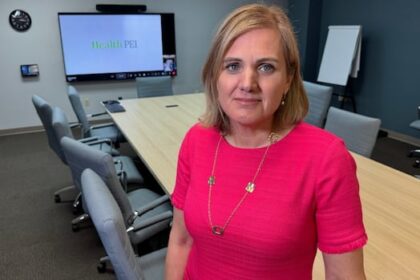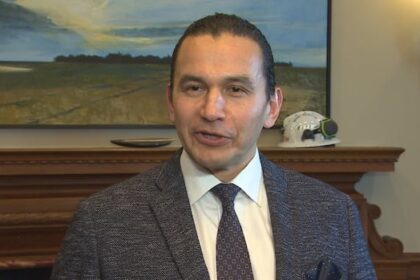A common sentiment was shared by First Nations people young and old at the annual Saskatoon Tribal Council Pow Wow on Tuesday. As people gathered to honour residential school survivors and the ones who didn’t make it home, APTN News asked about the state of reconciliation. Several people had similar things to say. “It’s very hard to say ‘yes, we’ve made progress,’” said Carolyn Checkosis, “but not significant like it should be. “Give us a chance and listen to our stories. Racism has no place in Canada.” Nine hundred dancers registered for the event. One of them travelled from Detroit, Michigan. Jerry Cleland is Chippewa and follows the pow wow trail. “When we come here, we represent our people-our nations back home. Our grandma used to always tell me when you go to someone else’s community to behave because we represent everyone back home as well,” Cleland said. “It’s awesome to see how big pow wows have become and how many of the children are becoming involved. It does instill a lot of pride, you can tell by the way people dress and the things they wear.” Cleland said Canada is doing better at reconciliation with Indigenous Peoples, noting that right now in the United States, “there is no reconciliation.” APTN asked a younger participant if he’s seen reconciliation in his own life. George Gamble, a member of the drum group Minapeyak, named for the N1 basketball shoe, said the ancestors would be proud of how far they’ve come. “It’s coming a long ways now,” said Gamble, who’s a drum keeper and singer. “Having our people showing their styles of dancing, because back then our parents, our grandparents went through the system. Now we’re living their life.” A dancer from Mistawasis Nihiyewak who dances old style fancy, Yvette Duquette agreed reconciliation with First Nations peoples has come a long way, but said there’s more to do. “Usually when change happens it’s always slow, and we need to have that patience. Many people are starting to understand what First Nations have gone through. Keep in mind the process is going to be slow-it is sometimes frustrating because we want to see change,” Duquette said. “But if change is going to come it’s going to have to be in a good way instead of rushed. In Cree-when we rush things we say ‘mamasis’ and that’s one of our teachings that we don’t do things mamasis.” She said her parents both grew up in residential schools and she and her siblings experienced inter-generational trauma. “I remember as a kid, my mother having the harsh teachings from having a nun for a mother and a father who was a priest,” Duquette said. “Those were the teachings they received growing up. “They missed out on First Nations teachings and now today we have to re-teach that so all our people have the proper teachings.” Aside from dignitaries like the premier of Saskatchewan and mayor, a contingent of Saskatoon Police Service (SPS) officers were part of the grand entry and recognized by STC Tribal Chief Mark Arcand for protecting the community. It’s a far cry from the distrust among First Nations people fostered by the RCMP’s role in enforcing residential school attendance and child apprehensions. It’s also a far cry from the “starlight tours” that Saskatoon police became infamous for in the 1990s. One of the SPS officers was First Nations Constable John Langan, an eight-year member of the service who has experienced the affects of intergenerational trauma that grew out of the residential schools. He wears braids and a rainbow coloured police badge on his uniform that also depicts a medicine wheel. “When I was 13 years old, (my stepdad) acknowledged what these schools had done to him. He was beaten by a priest with a hockey stick and many other things that he didn’t share until he passed away,” Langan said. “I’m that first generation in my family to get a university education, to own my own home, to have a beautiful wife, she’s everything to me. We both come from a background of residential school survivors but we’re trying our best to be that change that we want to see in the world,” he said. Langan not only grew up with the affects of residential schools, but he sees the trauma in the homeless and addicted in his day to day work as a police officer. “It hurts my heart, but what I do is I utilize ceremony, I go to sweat lodge and pray and ask for help, and I pray for those that need help,” Langan said. “But, what I kind of see right now on the street is they’re so proud of me and what I do… I always try to treat people with respect and I share with them about what it’s like to see your parents go through addictions.” Langan also said he’s had the opportunity to teach other police officers about First Nations culture and will now be doing quarterly sessions. “That’s the problem I see, is just a lack of understanding of each other, so that’s what I’m doing, I’m sharing our culture. I’m not ashamed of who I am at the police service, because I’m very aware of the history we have with First Nations people. But I’m going to be that change,” Langan vowed. Of being part of changing hearts and minds by sharing with non-Indigenous people, Langan said it’s difficult sometimes. “It’s just like Buckley’s, it sucks going down, but you know that it works.” Continue Reading
Theres more work to do on reconciliation a common message at Every Child Matters Pow Wow in Saskatoon

Leave a Comment











